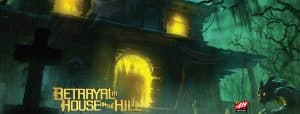Table of Contents
People have been playing board games for thousands of years. In fact, some games like The Royal Game of Ur in Iraq date as far back as 3000 BC and are still played today.
With the recent surge in popularity of board games and what some are deeming the ‘golden age of board games’, I thought it would be a nice change of pace to take a step back and look at where the hobby of board games first began.
In this article, I will take you back in time to the year when board games were first created, and follow their evolution all the way to the modern-day board games we are playing today.
In the article I will answer questions such as:
- What was the first board game?
- What is the longest-running board game?
- How have board games evolved through time? And
- Why are board games experiencing such a popularity boost in the 21st century!
But first… we must start at the beginning.
5000BC – Evidence of the First Pre-Historic Board Games!
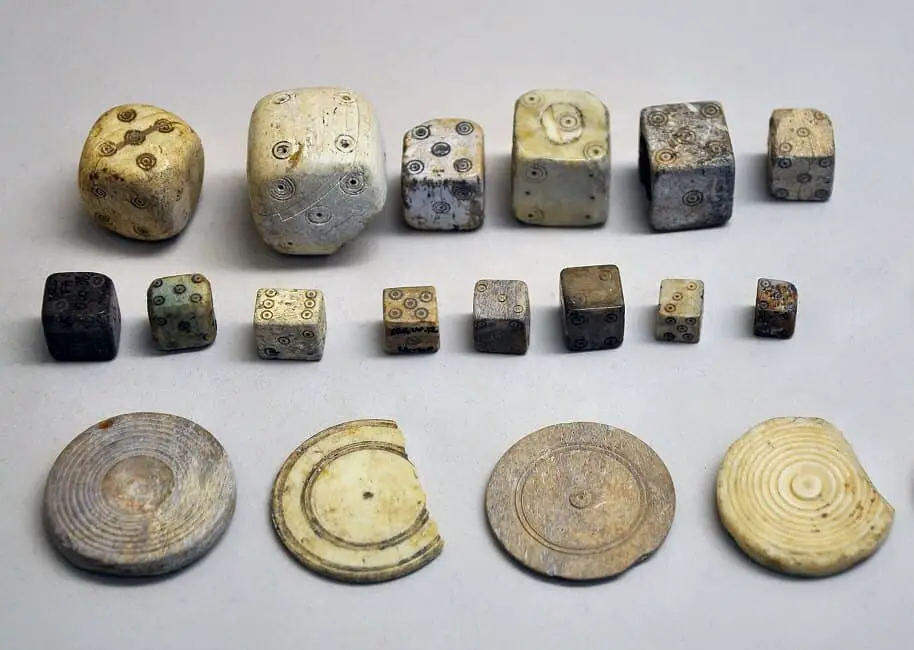
The first evidence of board games dates back over 7,000 years in pre-historic times before humans had even developed written language!
In a burial grounds called Başur Höyük located in the South East of Turkey, Archaeologists discovered carved and painted stones. These stones represent the first iteration of a piece we all use in board games even to this day – DICE!
Dice style games have been discovered in Archaeological sites all along what is known as the Fertile Crescent which spans over modern-day Iraq, Israel, Palestine, Syria, Lebanon, and southeast Turkey.
Each region appeared to have their own take on the dice – from painted sticks to carved wood, bone, sheep knucklebones, and shells.
It is unkown which type of games were played with these dice, however carbon dating suggests they were developed around 5000BC.
NOTE: Moving forward in time, the six-sided dice as we know them today were invented by the Romans in 200BC and were initially used for gambling!
3100BC – Senet: The Game of the Gods
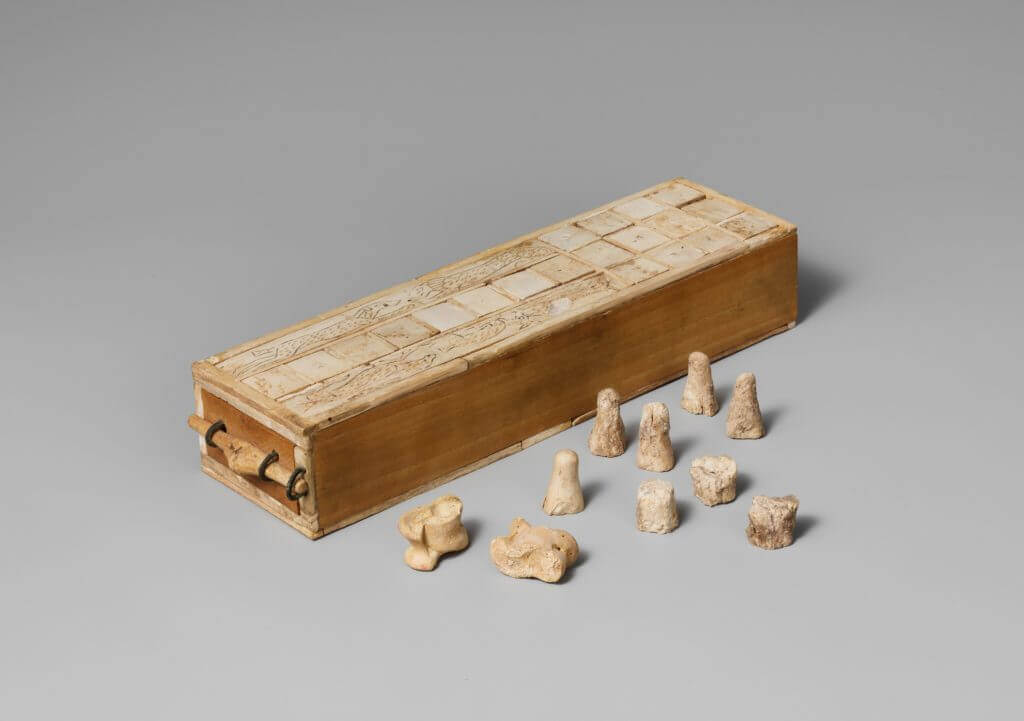
Board games were a favorite pass time in Ancient Egypt, especially among royals. The most popular of these games was one called Senet.
Senet is technically the first ‘board’ game ever made. The game was played on elaborately carved and decorated boards (or for the poorer folk, simply carved into the ground).
While the rules of the game are lost with time. Many have attempted to reconstruct how the game might have been played.
We may not know the exact rules of the game, however, we know the theme and the pieces that were used.
The Pieces and Board
A Senet board has 30 squares laid out in 3 lines of 10 with some squares having hieroglyphs etched into them.
The game utilizes the prehistoric dice we mentioned earlier and game pieces like pawns (7 pieces per player).
The theme of the game
Ancient Egyptians were very much into faith and worshipping their many gods.
The game of Senet is linked to the afterlife, believed to be a talisman of a deceased person as he makes his journey. It was believed the winner of the game would be under protection from the gods – Ra, Thoth and Osiris.
Because of the belief that the game was a talisman. It is quite common to find versions of the games in Tombs and burial chambers (they even found 4 Senet boards in Tutankhamun’s tomb)!
3000BC – Mehen: The Game of the Snake
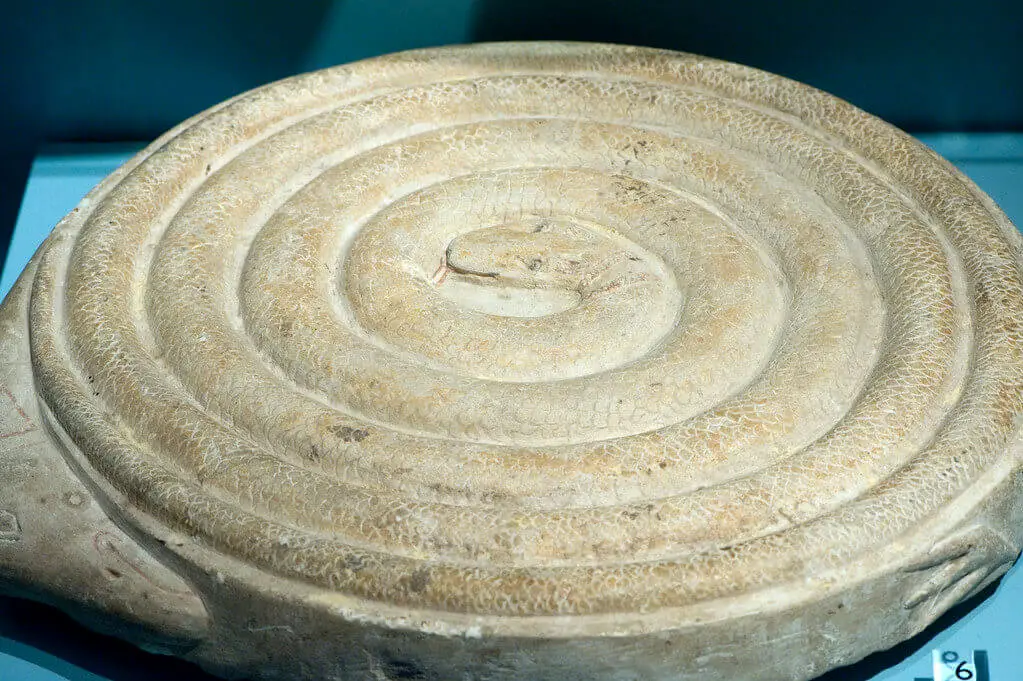
As board games grew increasingly popular amongst Egyptian royalty and the upper class, it wasn’t long until the working class started to adopt board games of their own.
One such game is called Mehen, which is a board game played on a board in the form of a coiled-up snake with partitioned playing squares divided along the snake’s body.
Like Senet, the rules of Mehen are unknown, but we do know that typically a Mehen board came with 3 pieces in the shape of a lion, 3 in the shape of lionesses and 6 sets of different colored marbles.
NOTE: Mehen was believed to be a protective god who takes the shape of a snake that coils around the Sun god Ra during his journey through the night. In ancient texts, Mehen and the game became synonymous with each other – Archaeologists are unsure whether the game derives from the Deity or vice versa.
2650BC – The Royal Game of Ur – Humanity's Longest Running Board Game
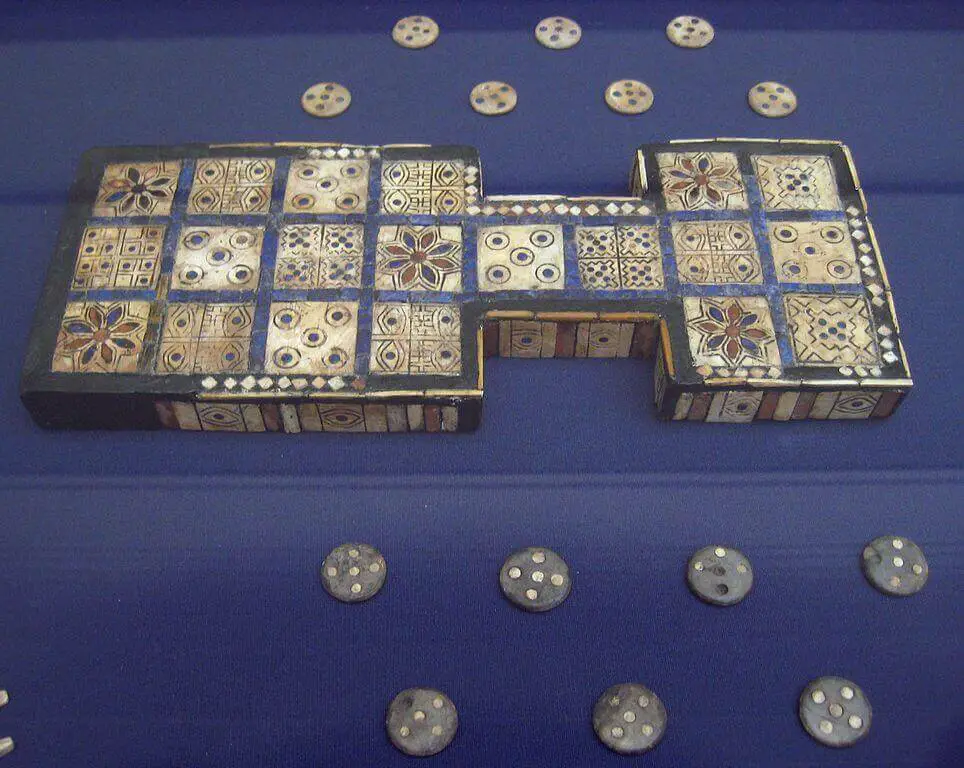
It is a common misconception that the longest-running board game in the world still played to this day is Backgammon. However, this title ultimately belongs to The Royal Game of Ur.
The rules to The Royal Game of Ur (Also known as the ‘Game of Twenty Squares’) were thought to be lost in history, much like Senet and Mehen above.
However, a game enthusiast named Irving Finkel discovered the game’s rules carved into an ancient stone tablet thus reviving the ancient game!
This makes the Royal Game of Ur the board game that has been played longer than any other board game in human history.
The game is a two-player strategy game where players race to move all seven of their pieces along the board using dice rolls. Players are able to ‘capture’ the opposing players’ pieces meaning they have to start from the start again. The game is equal parts luck and skill and has a very close resemblance to backgammon.
2000BC – Ludos Duodecim Scriptorum – The Ancestor of Backgammon!
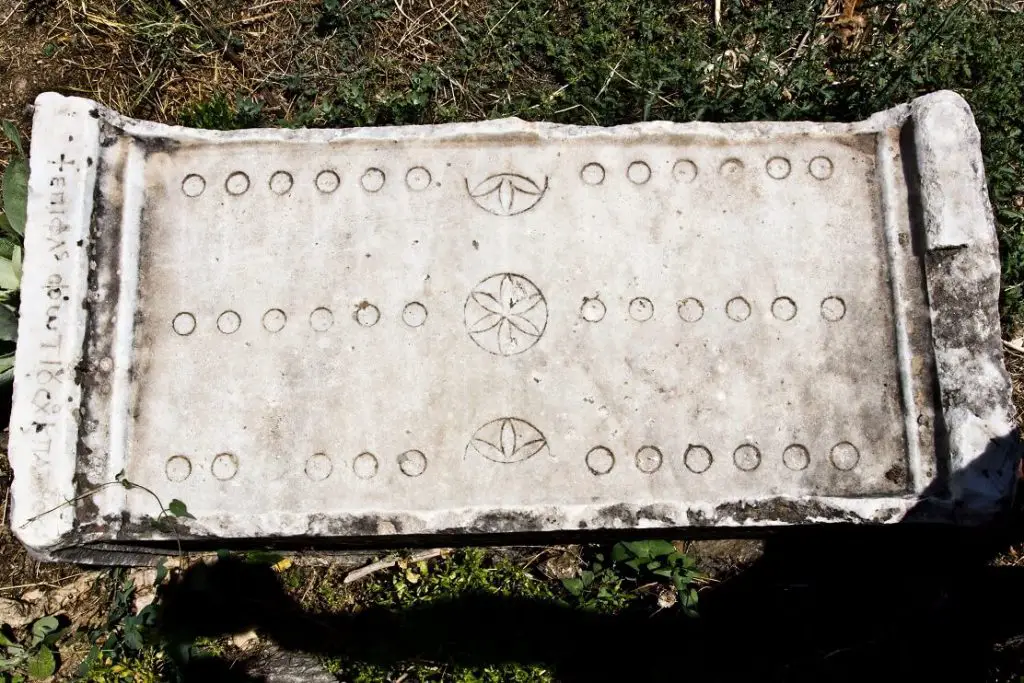
Ludos Duodecim Scriptorum (Game of twelve markings) was a game that was hugely popular during the peak of the Roman Empire.
The game is very similar to modern-day backgammon with the board having three lines of 12 markings, each player playing with 15 checkers and 3 six-sided dice rolled to determine movement.
Like backgammon, the winner of the game was the first to bear off all their checkers from the board.
The name ‘backgammon’ first appeared in print in 1645. The origin of the name is unknown, but many believe the name is made up of the Middle English baec = back and gamen = game.
Backgammon was a constant feature in art throughout the second millennium, most famously in “The Garden of Earthly Delights” by Hieronymus Bosch and “The Triumph of Death” by Pieter Brueghel.
Through the ages the games popularity was opposed by authorities and the Church due to it’s elements of gambling among the public.
Today Backgammon is as popular as ever, especially with the introduction of the internet and ability to play for free online.
NOTE: Backgammon experienced a huge resurgence of popularity during the mid-1960s due to the popularity and charisma of Prince Alexis Obolensky who would eventually become known as “The Father of Modern Day Backgammon” (He even managed to get Hugh Hefner hooked on the game)!
1300BC – Ludus Latrunculorum
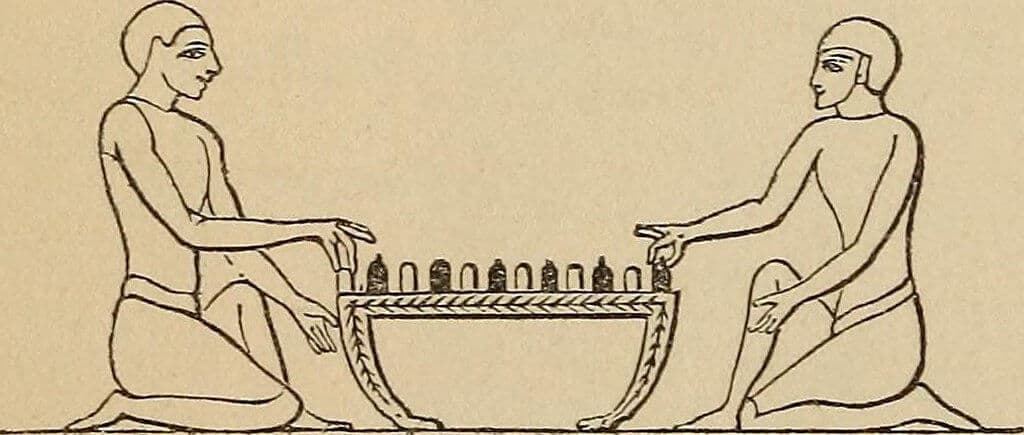
Ludus Latrunculorum (also known as ‘Latrones’) is a game that translates directly to mercenary or highwayman.
The game is a two-player abstract strategy board game that was played throughout the Roman Empire and was the first game to be based on military-style tactics.
It can, therefore, be argued that Ludus Latrunculorum was the first very primitive war style board game.
While the rules of the game are incredibly hard to interpret based on the archaeological evidence found (and there are multiple debates as to the interpretation of this evidence). It is generally agreed that the game is very similar to chess or draughts in the way it is played.
The game has many pieces which are all played on a checked board called the ‘city’. Each game piece is called a dog and like chess is one of two colors.
The aim of the game is to surround an opponents piece with any two pieces of the opposing color, thereby removing it from the board.
Many historians believe that Ludus Latrunculorum had an influence on the development of Chess and especially the movement of the pieces in the game.
500BC – Board Games for Children!
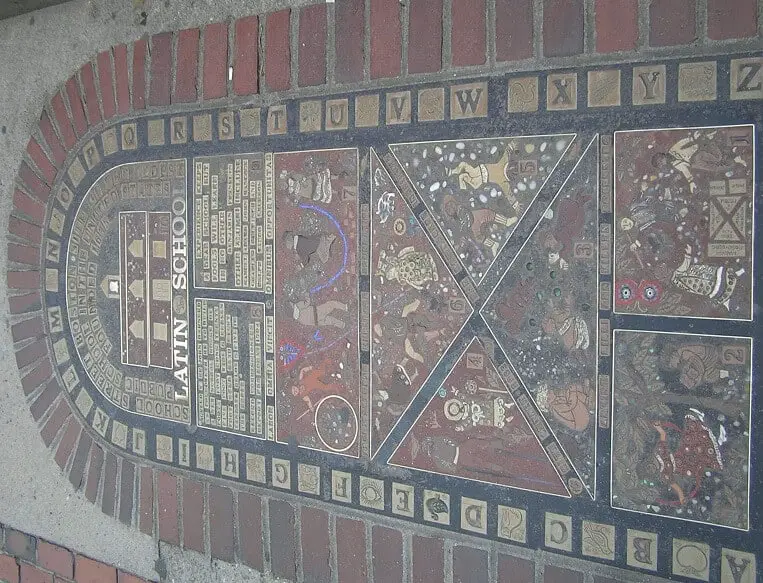
Up until this point in history, board games were primarily played by adults. However, due to the popularity of board games, it was at this point in time that games started to be developed and adapted for children.
One such game is that of hopscotch!
There is evidence of hopscotch courts throughout Rome that are relics of this historical pass-time!
400BC – GO and the Eastern Influence on Board Games!
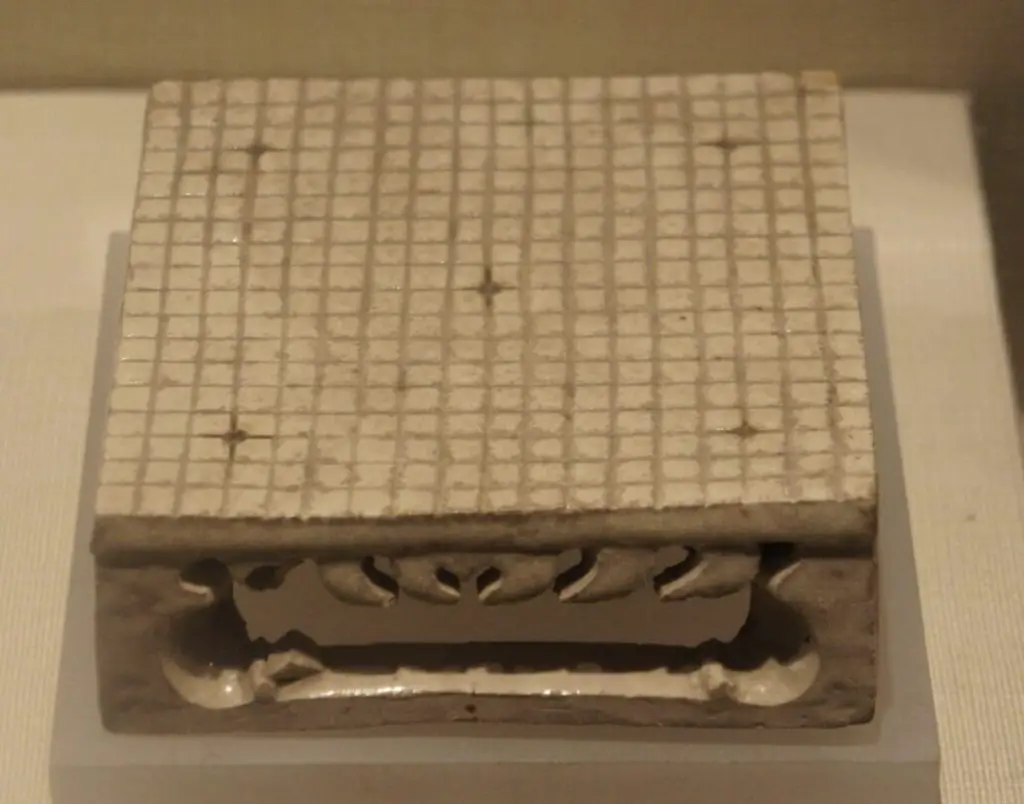
While board games were played across Asia for centuries before 400BC, they were typically interpretations and adaptions of the Middle Eastern board games mentioned earlier.
It was during this time in history though, that a game was being developed in China that would sweep the East and become one of the most popular board games of all time even to this day.
That game was GO. GO is a very deep and strategic abstract strategy board game. The game has more possible moves than the total number of atoms in the observable universe.
Go is played by two players who place stones on a checkered board. Each players stones are represented by a different color. The objective is to surround the largest area on the board with your pieces while encircling the opponents’ pieces (and removing them from play).
Today GO is still a hugely popular board game, with an estimated player base of over 60,000,000 players!
400BC – Liubo – Another Eastern Board Game!

Around the same time as the development of GO, another board game was being developed in the East. This board game was called Liubo and was enjoyed as a pass time during the Han dynasty.
Liubo boards and pieces were often found by archaeological digs of gravesites and tombs around 400BC.
Liubo was a two-player board game in which each player had six pieces that would be moved around the distinctive symmetrical pattern of the Liubo board. Moves were determined by throwing six dice sticks.
The aim was to move pieces to certain parts of the board which allowed them to become ‘Owls’. When this occurred players could enter the center of the board called the ‘river’. Once a piece enters the river a player is able eat a ‘fish’, thereby earning points.
The player with the most points at the end of the game was the winner.
200BC – Snakes and Ladders!
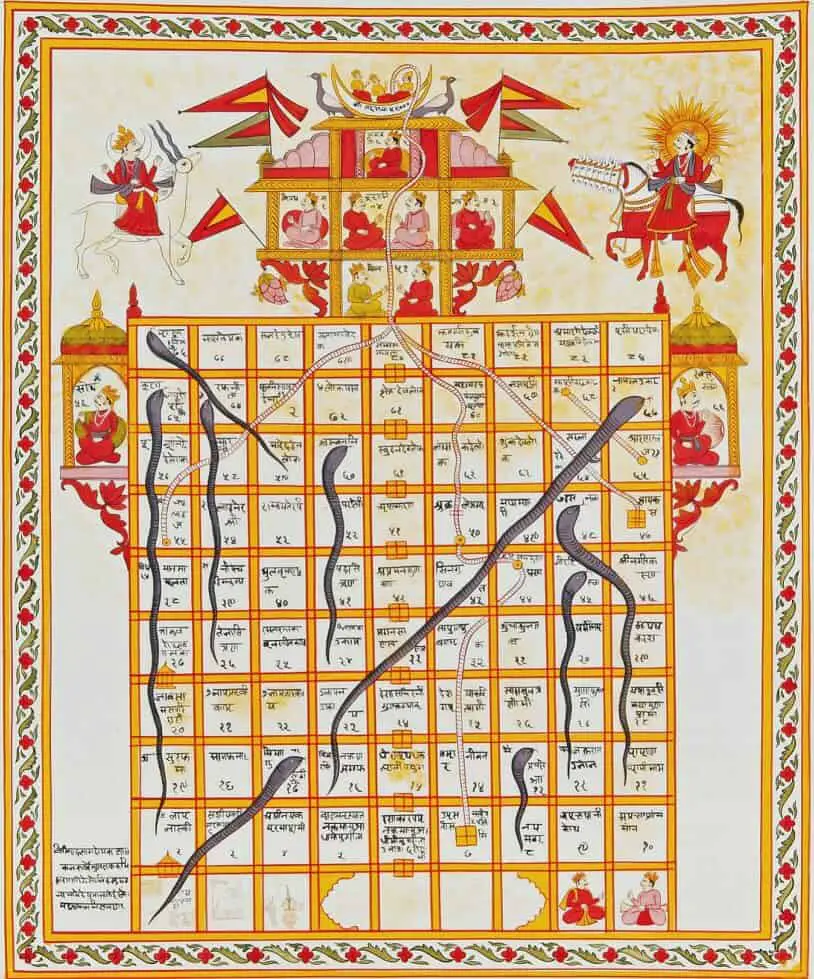
Snakes and Ladders (or Chutes and Ladders) is another tremendously popular board game played by thousands of children worldwide today!
Snakes and Ladders originated in ancient India and was known at that time by the name ‘Mokshapat’.
While it is not clear who developed the game, it is clear that the game was used as a tool for adults to teach morals to children.
The squares of the game in which the ladders start were said to resemble virtue and those holding the head of a snake represented evil.
The game was brought to the West by English colonial rulers in the late 19th century and marketed as ‘Snakes and Ladders’ with all moral and religious aspects stripped from the game.
The game has not changed much since this time and is still available today!
500AD – Hnefatafl Board Games – The Board Games of Vikings!
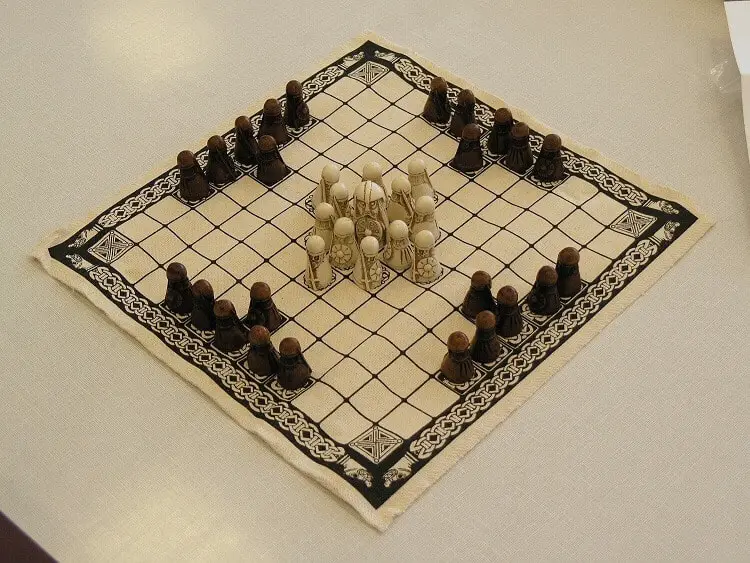
During the years 200BC to 500AD, there was an explosion in the family of board games called Hnefatafl games in Northern Europe.
These games are Germanic and Celtic strategy board games that are based on military tactics. They are played on a checkered board with the set up generally being asymmetrical – where one player would have more pieces than the other.
There were a huge number and variety of Hnefatafl board games. Most revolved around an uneven 2:1 ratio of pieces with the smaller army having a ‘King’ to protect. The idea was for the King to escape the board by reaching the edge before the opposing army is able to capture and defeat him.
Hnefatafl board games spread throughout ancient Europe – anywhere the Vikings sailed. There have been many Hnefatafl board and pieces uncovered in warrior burial grounds, it was believed there was a strong link between military strategy and playing the board games.
550AD – Chaturanga – Ancient Indian Board Game
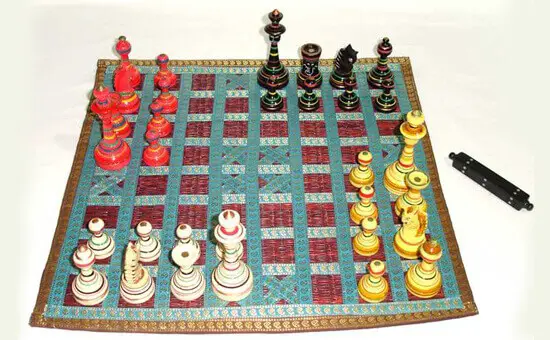
Chaturanga was a board game developed in Ancient India during the Gupta Empire, and is believe (controversially) to be the ancestor of Chess!
The meaning of Chaturanga is “to have four parts” and comes from a battle formation referring to four divisions of an army:
- Chariots;
- Elephants;
- Cavalry; and
- Infantry.
The game is played on an 8×8 checkered board whereby each player has 4 pieces (representing the 4 armies) and 4 pawns.
The exact rules of how to play the game are unknown – however the overall objective of the game is to checkmate the opponents ‘Raja’ (King), much like modern day chess.
600AD – Chess!
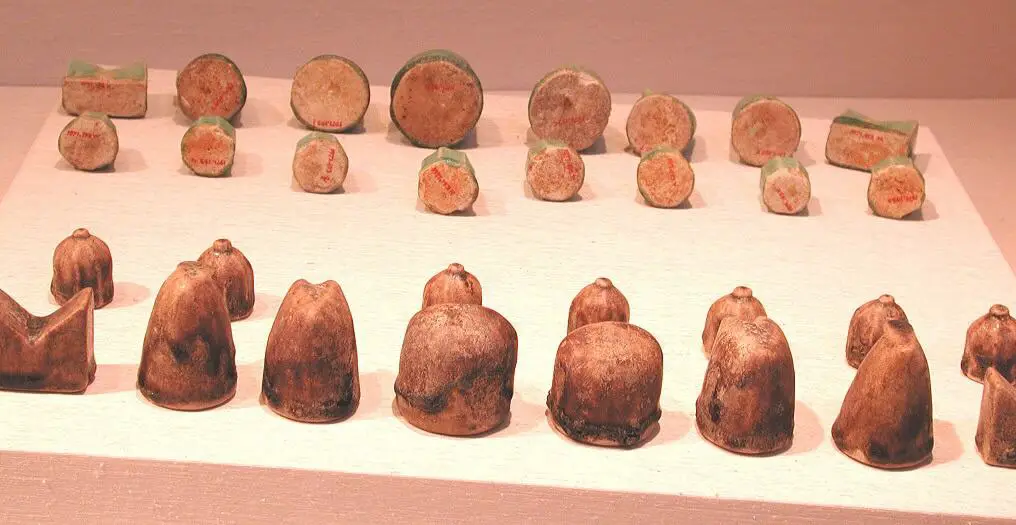
The first evidence of the game of Chess was located in Sassanid Persia at around 600AD.
The exact origins of Chess are unknown, however, many believe that the game originated from Chaturanga and was adapted by Muslim traders as they traveled to European seaports.
The original form of Chess was called Shatranj and it spread through Europe like wildfire.
Over the centuries the rules of Shatranj were modified and by 1475, the game was essentially, the same as it is played today.
During the age of enlightenment, chess was seen to be a prestigious pass time associated with nobility and high culture and was viewed as a means of ‘improving ones-self’.
Today Chess is one of the most prestigious board games, with the best Chess players in the world being titled ‘Grandmaster’ – a very highly regarded title.
Chess (while not officially in the Olympics) is recognized as an Olympic sport by the International Olympic Committee.
There are thousands of Chess clubs all over the world and the sport even has it’s own Olympiad every 2 years and a world championship!
Historical Milestones of Chess:
- 600AD: References to early Chess found in a Persianmanuscript.
- ~700AD: Date of first identified Chess pieces.
- 1000AD: Chess spreads throughout all of Europe and Russia.
- 1475–1500AD: Rules begin to evolve into the game we know today: especially, new moves
- 1497: Discovery of the first book about Chess.
- 1780: Master games of chess begin and are recorded.
- 1836: Introduction of the first Chess magazine.
- 1849: The first USA Chess tournament is held.
- 1851: First international chess tournament.
- 1866: Introduction of the timing clock and first matches held using these.
- 1883: First tournament to use specially designed chess clocks.
- 1886: First acknowledged world championship
700AD – Mancala
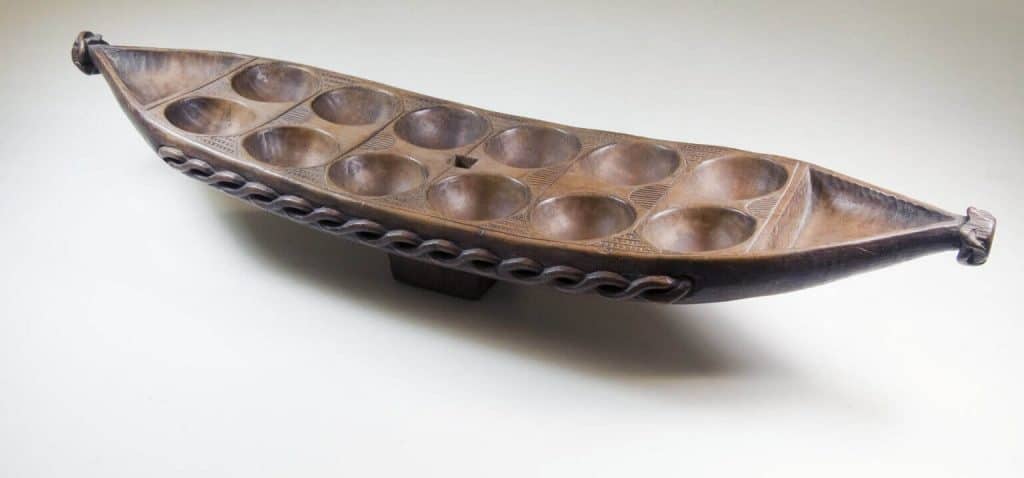
Mancala is a count and capture board game that originated in North Africa in 700AD. Mancala comes from the Arabic word ‘Naqala’ which has the meaning ‘to move’.
The game was made from quite primitive materials and would often be played simply with holes in the ground.
Mancala is a two-player strategy game made up of a board with many pits (holes) and an equal number of pieces (stones or seeds).
The game starts with an equal number of pieces in each of the pits on the board. On a turn a player will remove all seeds in one pit and deposit them one at a time in adjacent pits, edging towards their main pit at the end of the board (usually a lot larger than all other pits).
Once a piece has been placed in the player’s own pit at the end of the board, it is ‘captured’. At the end of the game, the player with the most captured pieces wins.
The game is very very simple but requires a lot of deep thinking and strategy.
Mancala today is still very popular in Northern Africa and the Middle East. These days Mancala is used to refer to a class of game rather than a particular game on its own.
1027AD –Shogi – The Japanese Take on Chess!
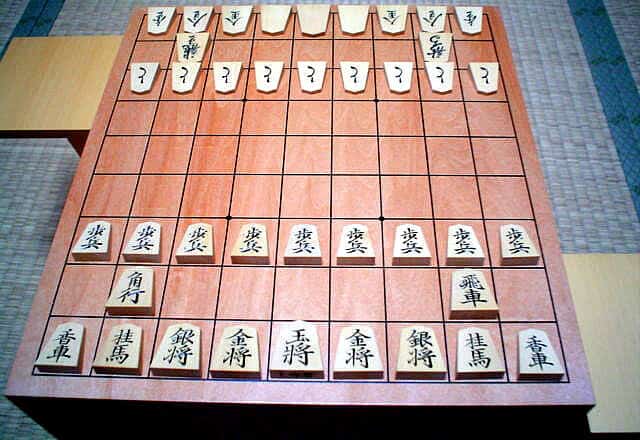
While it is not clear when the board game that would eventually evolve into Shogi was introduced to Japan, it is evident that the game existed in at least 1027 due to reference in the book Kirinisho published during this time.
The earliest archaeological evidence of Shogi pieces was a group of 16 game pieces found in the grounds of Kofuku-Ji which had a writing plaque included indicating the year 1058.
The rules of Shogi adapted and evolved over the years until in 1612 the rules for modern Shogi were first approved by the Tokugawa Shogunate military government.
This started a tradition of an annual tournament that was hosted on November 17 each year.
Shogi is a board game that is still very popular in both Japan and the West.
1100AD – Checkers

While the origins of checkers (also known as draughts) are hotly debated among historians. One thing can be agreed upon – the game of checkers as we know it today can be traced to the year 1100AD.
It was at this time that a pioneering Frenchman decided a similar board game to checkers should instead be played on a Chessboard and the number of pieces per player increased to 12.
And thus, a worldwide favorite board game as we know it today was born.
1120AD – Dominoes
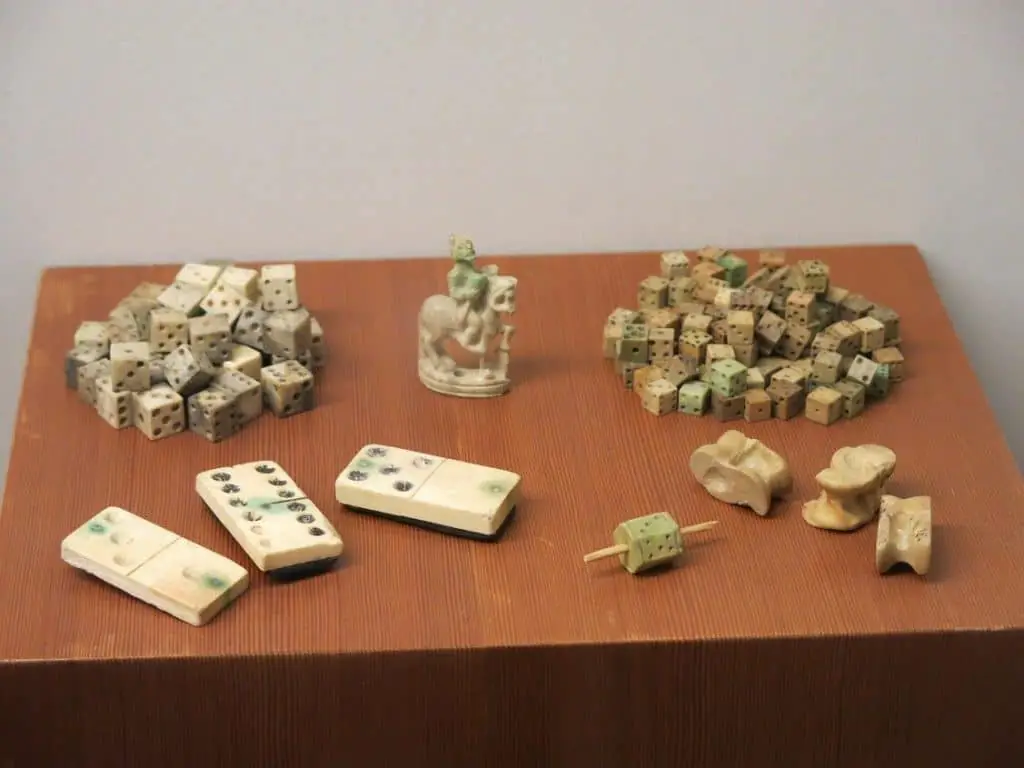
In the year 1120AD tile board games began to surface in China. These tile games would slowly change over time to become one of the most popular tile-based board games known today – Dominoes.
Originally Dominoes was used in gambling halls in China. The tiles were designed in such a way to represent every roll possible with a dice.
Traditional Dominoes are made out of ivory or bone with ebony pips. In the ancient Chinese version of dominoes, the tiles were divided into Military tiles (tile which are unique) and civilian tiles (tiles that can have duplicates).
One of the first documented mentions of dominoes came from a book titled ‘Former Events in Wulin’ written during the Yuan Dynasty (1271 – 1368). In this book, mention was made about ‘Pupai’ which stood for gambling plaques or dominoes.
Dominoes remained popular in China for hundreds of years. It wasn’t until the mid-18th the gamemade its way to Europe. Here it saw a huge uptake and growth in popularity – predominantly in Italy and France.
Dominoes is still an incredibly popular game played today, especially in Latin America where the game is known as the national game of many Carribean countries.
1600AD - Pachisi
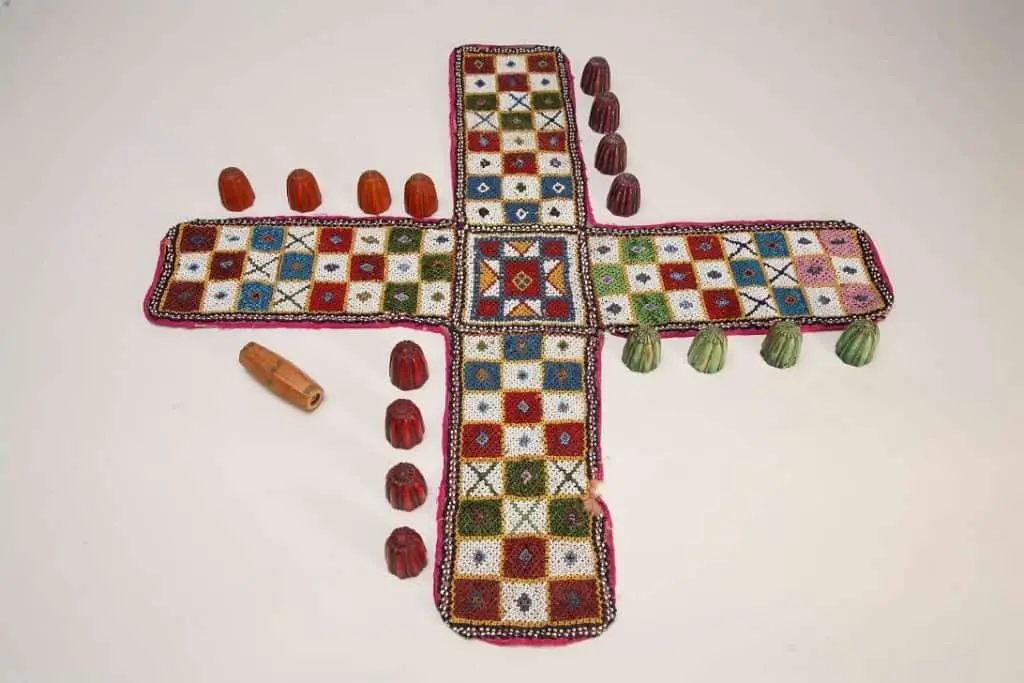
Pachisi is a board game that was developed in the 17th Century in medieval India.
The game is a cross and circle game that has been described as ‘the national game of India’. The name of the game is derived from the Hindi word for 25 ‘paccīs’ (being the highest possible score in the game).
Pachisi is a game that can be played with 2, 3, or 4 players (4 players usually play in 2 teams).
In the game one team has red and green pieces and the other team has yellow and black pieces. The aim of the game is for a player to move all four of their pieces around the board counterclockwise before their opponents.
Rules of how to play the game can be found here.
1880AD – Mahjong
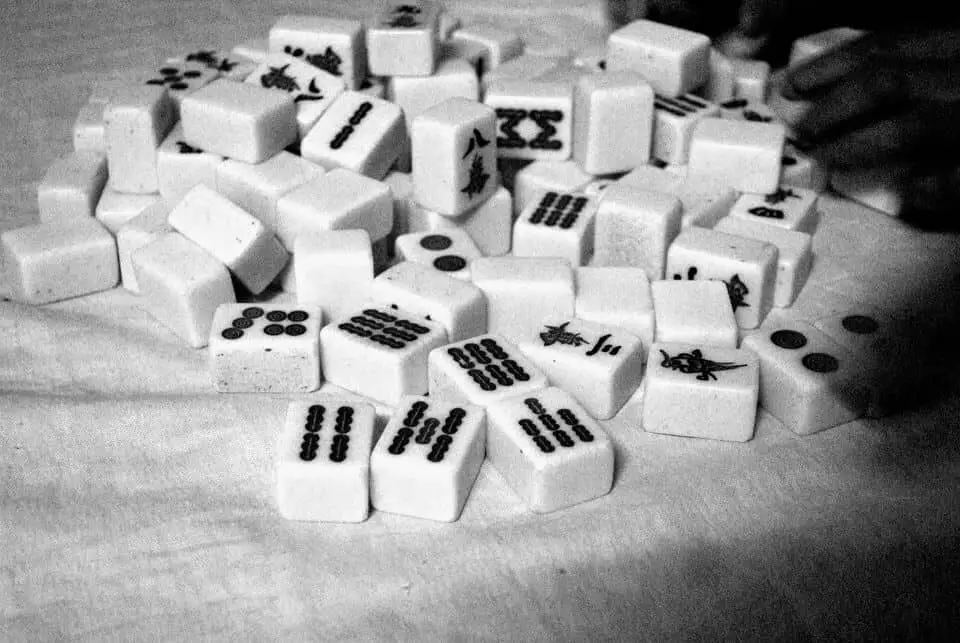
Mahjong is a tile-based board game that originated in China in 1880. The word Mahjong translates roughly into the word ‘sparrow’ and is based on the clinking of the tiles while they are shuffled at the beginning of a game.
Mahjong took China by storm. In 1905, the game grew in popularity so much that it overtook chess as the most popular board game played by Chinese citizens.
It was during this time that Mahjong was introduced to Westerners and began to be played in British clubs in Shanghai. Other Asian countries also started to take notice, and adoption of the game started to grow in both Japan and Korea.
NOTE: The Chinese government during the early 20th century only wanted the elite members of society playing the game as they feared that the lower class may develop their mental capacities through playing the game!
In the 1940s the game of Mahjong was completely banned in China after the Communist revolution because the game was seen to encourage gambling and was a pastime of the upper echelons of Chinese society.
It wasn’t until 1985 when the ban was lifted and the game regained popularity as people no longer feared being persecuted.
1903 – The Landlords Game – The Ancestor of Monopoly is Born!
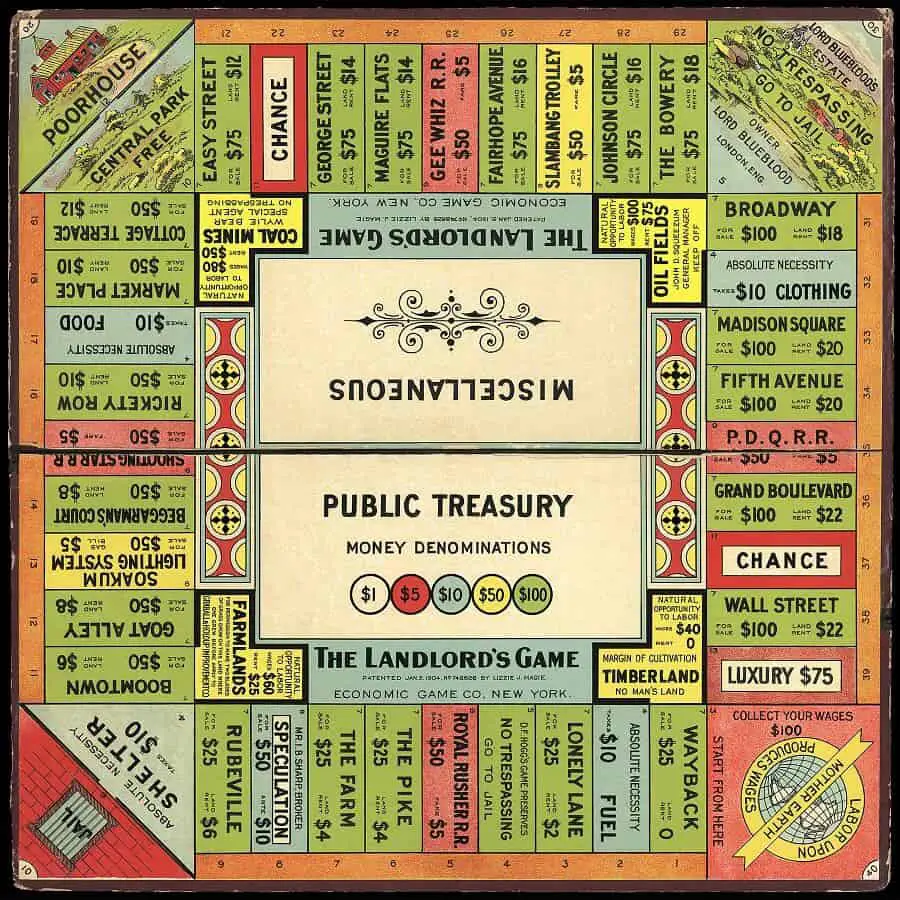
In 1902, a game known as ‘The Landlords Game’ was designed and developed by an American woman named Elizabeth Magie (‘Lizzie’). Lizzie self published her game and released the first commercial version in 1906.
The Landlords Game was the first iteration in what would later become one of the most popular board games in the world – Monopoly.
In the original game there were two sets of rules:
- A monopolist version whereby the goal was to create monopolies and trusts in a game to crush opponents.
- The remedy to the first rule set was presented by way of “The Single Tax”; a system whereby players would share the wealth for a better and more equitable society. It included free college, and recognition of labor through wages.
The game and its rules were played by many people during the early 20th century with several variants developed based on Lizzie’s concept. Street names were changed, cardboard houses were used and rent values were increased as they were added to properties.
Lizzie patented a variant of the game in 1923, it was a different game by the same name.
In 1932, Charles Todd taught Charles Darrow the game monopoly. In 1933, Darrow applied for a copyright on the board he copied exactly from the Todds. Darrow began marketing the game as his own. Parker Brothers had Darrow patent the game then purchased the copyright and the patent from him. They also bought Lizzie’s 1923 patent and substituted it for the 1904 patent already in public domain. Once in Parker Brother hands, the game we all know was popularized and Lizzie Magie was written out of its history.
Today, Monopoly is still one of the world’s most popular board games and is now sold in more than 80 countries and produced in at least 26 languages.
During the 1970s controversy around the games brought Lizzie’s invention back into the public eye. There are many adaptations to the game including a new version that is an exact replica of Elizabeth Magie’s ‘The Landlords Game’ with all original rules.
1949 – Cluedo (Clue)
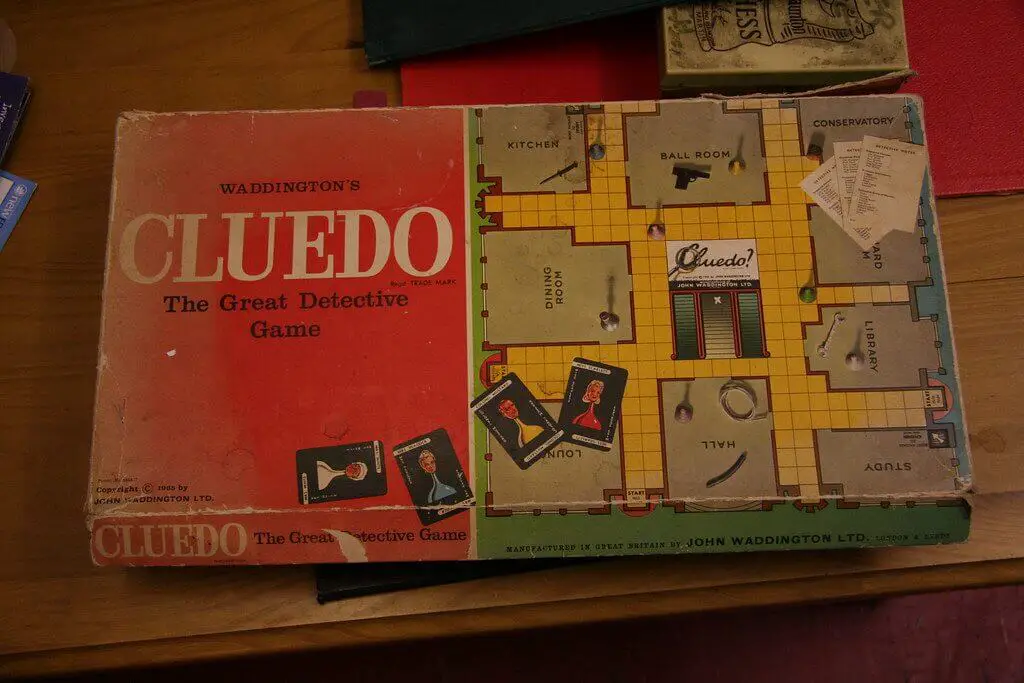
During WWII a Musician by the name of Anthony Pratt was playing piano in elegant European country mansions. In these mansions, he would observe the upper-class role-playing different murder mystery scenarios for their evening entertainment.
Anthony would take mental notes of what he saw and the different way the guests acted out these horrific murders. Towards the end of the second world war, Anthony developed a miniature version of what he observed into a board game called Murder! (later renamed to Clue). He would go on to patent the game in 1947.
Upon patenting the game, Anthony sold it to Waddington’s and it’s US counterpart – Parker Brothers (later purchased by Hasbro).
The games’ popularity was huge and the board game was a big hit. The game was released under the name Cluedo in the UK and Clue in the USA.
Since it’s release, clue has remained a family favorite board game, undergoing many adaptations to the rules and theme changes over the years. Clue to this day still remains one of the most played hidden identity board games of all time.
1959 – Risk – The Rise of War Games!

In 1957 a French movie director by the name of Alber Lamorisse released a game called La Conquête du Monde (The Conquest of the World). The game was a strategic war game in which players take control of armies and fight for control of territory on the world map.
The game was one of the first games of its kind and soon became very popular in France. In 1959 the game was purchased by the Parker brothers and released under the new name Risk: The Continental Game and introduced to America.
The game has had many different releases with themes over the years. These vary from taking over territories in space, middle earth, and even a star wars trilogy version.
In 2011 a legacy version of the board game was released (the first of its kind). It created a completely new genre of board game and took the world by storm.
1974 – Dungeons and Dragons and the Rise of Role-Playing Games
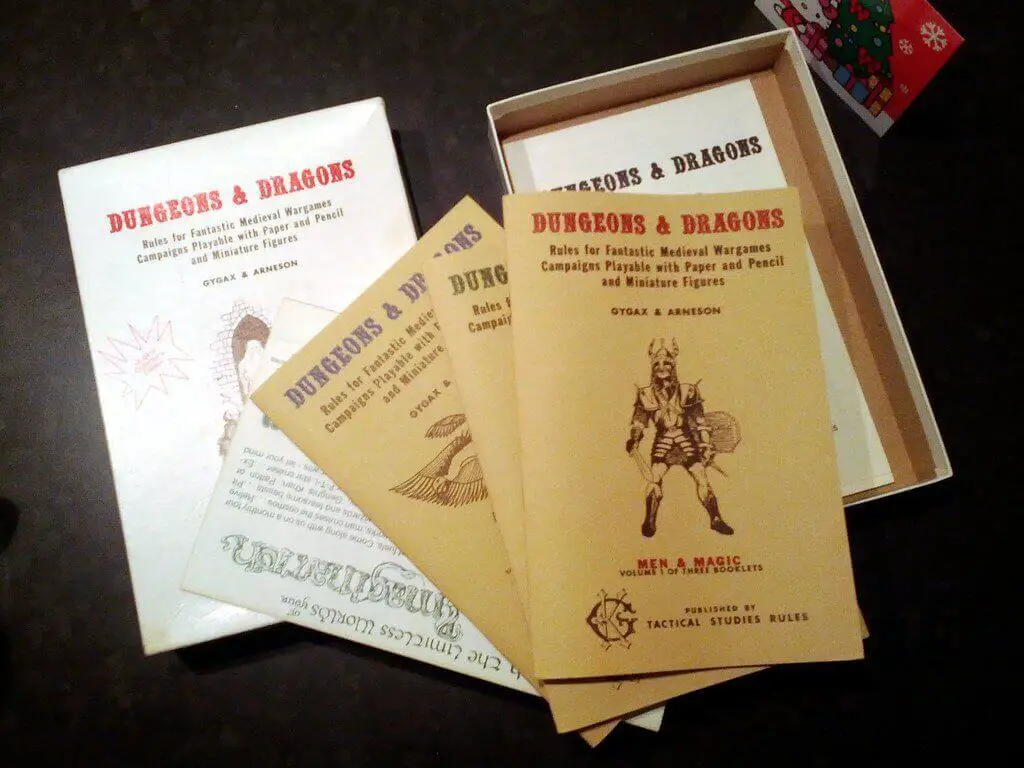
In 1974, in the state of Wisconsin, a hugely popular pen and paper role-playing game was born – Dungeons and Dragons.
The game would go on to spark the creative minds of millions of players around the world and would influence thousands of tv shows, movies, novels and games through time. The game was played with no board, just pen, paper, dice, and one’s imagination.
Originally created by Gary Gygax, Jeff Perren and Dave Arneson in their gaming group called the ‘Castle & Crusade Society’, the first versions of the game was published under the company ‘Tactical Studies Rules’ (later TSR Hobbies Inc).
The game was slowly modified over the years with constant revisions to the rules and content in the game and the game was also split into a basic and advanced version.
In 1997 a new era in the Dungeons and dragons story commenced as Wizards of the Coast purchased TSR. The game is still sold under Wizards of the Coast today.
Dungeons and Dragons has remained an immensely popular game up until today – with a new surge in popularity after being featured in the tv series stranger things.
1978 – The Spiel des Jahres Awards (Board Game of the Year)

In 1978 an award ceremony is held that would go on to become known as the ‘Oscars of Board Games’ – The Spiel des Jahres Awards.
The Spiel des Jahres is an award ceremony held in Germany every year and was a way to recognize the excellence in game design and to promote board games in the German market.
Today the awards get international coverage, with the Spiel des Jahres Award winner generally increasing sales of the board game from anwhere between 300,000 to 500,000 copies.
The games are judged by a handpicked selection of judges called ‘the jury’.
The criteria on which games are evaluated are:
- Game concept – originality, playability, and value;
- Rule structure – composition, clearness, and comprehensibility;
- Layout – box, board, and rules;
- Design – functionality, and workmanship.
The judges are chosen from a nomination by colleagues and decided by a vote – they can not be involved in game design, production or marketing so as not to have any bias in their decisions.
1987 – Warhammer – Tabletop Miniature Gaming!
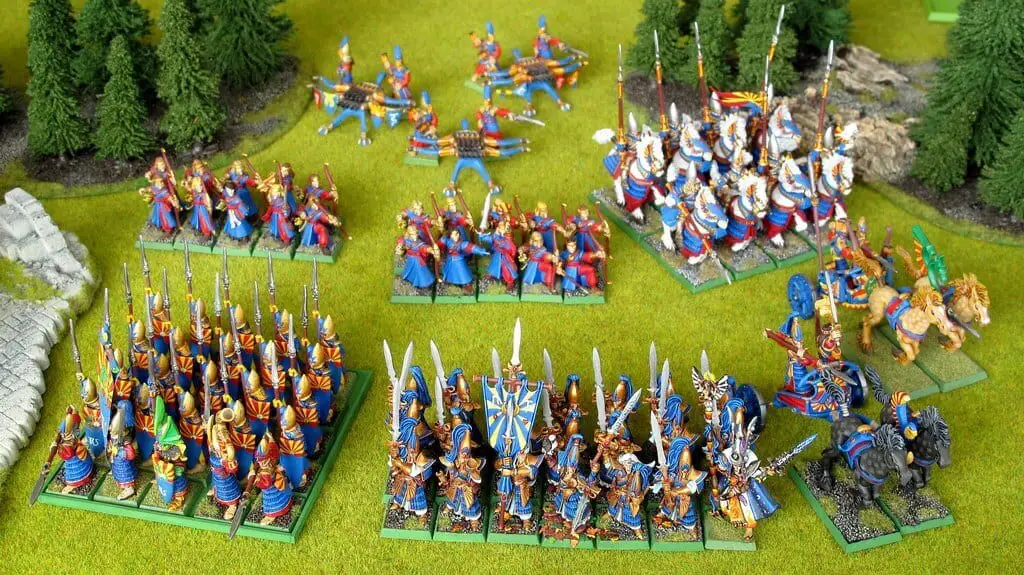
In 1987 Games Workshop released a miniature tabletop wargame called Warhammer 40k and Warhammer Fantasy Battle inspired by Dungeons and Dragons and the LoTR universes.
These games put players in control of large armies with HUGE backstories and detailed lore around them.
The games were a unique addition to gaming as they made the art of creating and painting miniatures incredibly popular.
Recently the Warhammer 40k universe was brought to a close in an in-game event called the End Times. Games Workshop has since released its new Warhammer saga called Warhammer – Age of Sigmar which has had a complete overhaul of the rules and lore of the game.
1993 – Magic The Gathering - Collective Card Game Explosion!
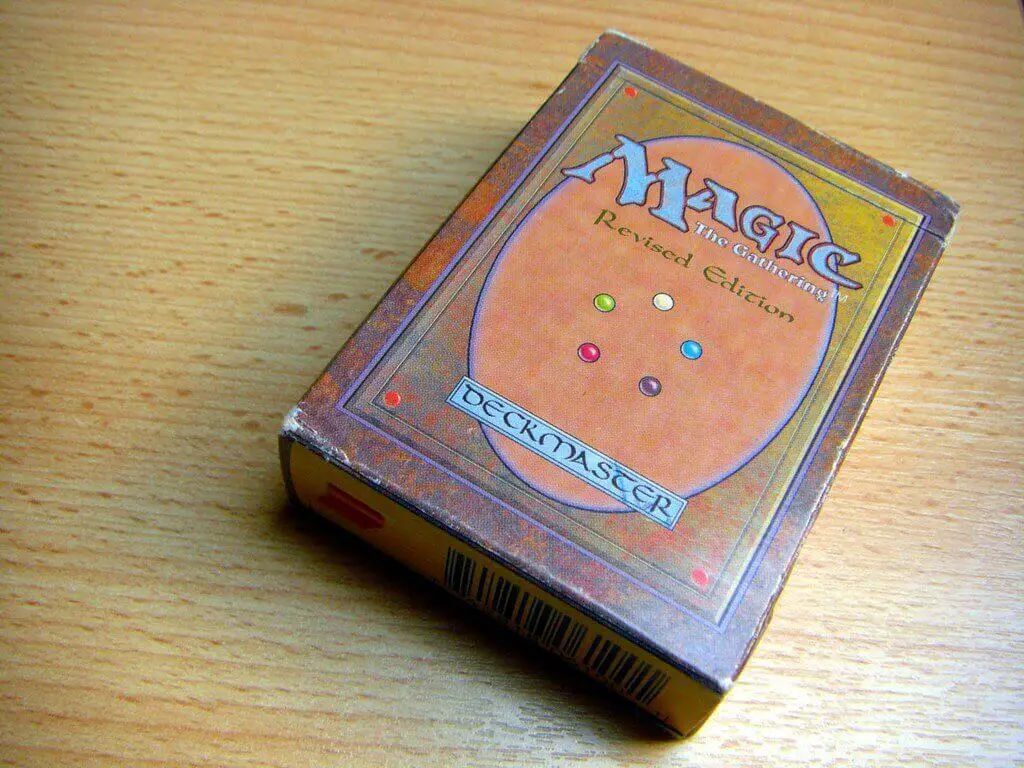
In 1993 a man by the name of Dr. Richard Garfield developed and released a game called Magic. The game was developed as a portable game that people could play while waiting in line at convention centers.
The game quickly took off and in the same year of release was purchased by Wizards of the Coast.
The game was originally called Magic – however it was changed to ‘Mana Clash’ due to the difficulty in trademarking the word Magic. This was quickly reversed, however, as the loyal fan base kept referring to the game as Magic and did not adopt the new name. Going back to the drawing board, Wizards of the Coast came out with the name ‘Magic- The gathering’.
Magic was the first board game other than Warcraft to introduce an ability for gamers to collect the pieces (cards) that make up the game.
Since its release, the game has released 6 Editions and more recently a Grand Creature update in 2007.
NOTE: One of the games more rare cards ‘The Black Lotus’ sells on eBay for up to $166,000!
1995 – Settlors of Catan – The Gateway Game to Modern Board Games!
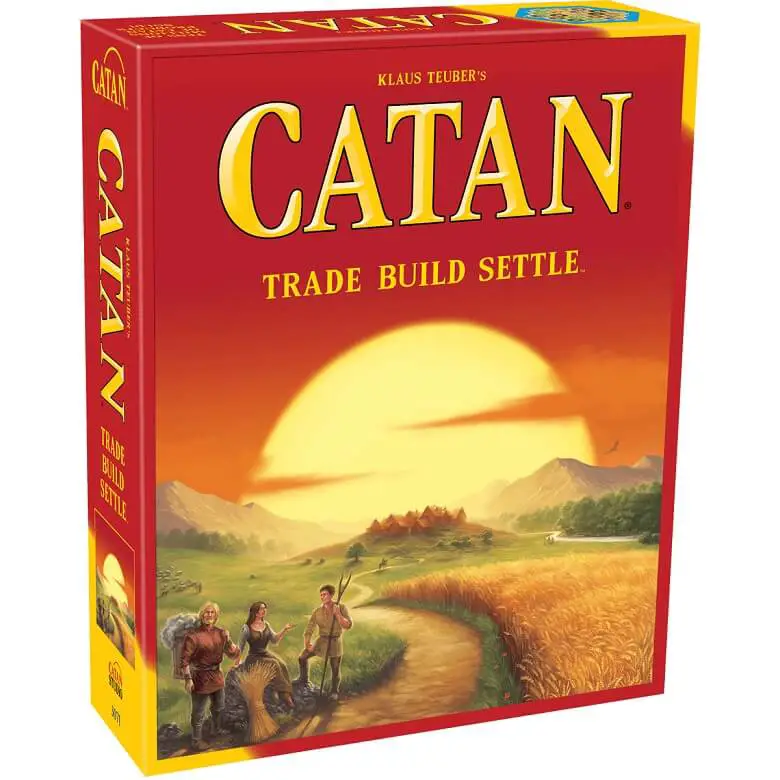
In 1995 a game was released that would skyrocket the popularity of board games and act as a gateway game for many new gamers into the possibilities of modern-day board games – Settlers of Catan.
Settlers of Catan (now called just Catan) is a game that took board games from roll and move style games that used dice and elements of luck to a game that is dynamic, interactive and introduced trading and negotiation in a unique and successful way.
Catan to this day remains one of the most popular board games of all time and has had countless expansions released to develop on the core game.
Catan is a game that revolves around the island of Catan. Players play against each other to control the hexagonal tiles and the resources they produce on the map and build settlements and roads in order to earn victory points to win.
The game has paved the way for modern-day board games and was a move away from luck-based play into strategic gaming. It is simple to learn and is able to hook in gamers with its interactive nature and requirement to be more involved in the game.
2000 – Boardgamegeek

In the year 2000, a website called boardgamegeek was created that was designed to be a forum where board gamers from all over the world could discuss their favorite games and essentially create a community of like-minded people.
Since then, the popularity of the website has grown exponentially.
Today the website has information on over 101,000 board games and has an ability for players to rate each game and provide reviews. The game has a list of the top board games as ranked by players in the world.
2009 – Kickstarter – The Incubator of Board Games

Kickstarter is a global fundraising platform that allowed hobbyist board game designers to pitch their games to the world and raise hundreds of thousands of dollars to pursue these games and release them to the public.
Kickstarter has completely revolutionized the way board games are funded and has blown the entire market wide open.
In 2015 The Conan Boardgame Kickstarter campaign raised over $3.3million with a target set of only $80,000.
There are many similar cases of this and some of the most popular modern board games have their roots on Kickstarter.
A great example of this is Gloomhaven – rated the best game on boardgamegeek was a Kickstarter success.
2013 – TableTop Web Series
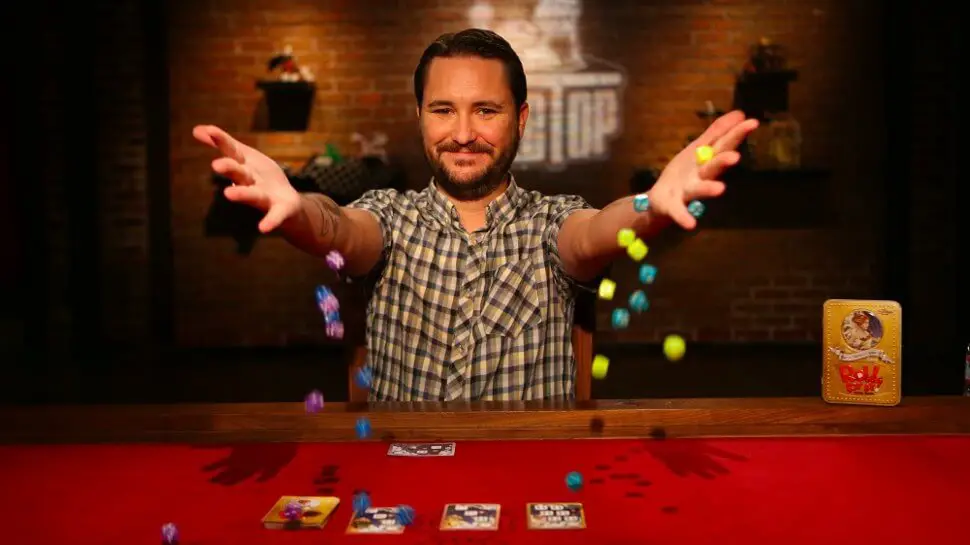
In the mid to late 2010s there was an explosion of popularity of board games with many deeming it the ‘golden age of board games’.
One of the catalysts to help this explosion of popularity was the release of a web series on YouTube called ‘TableTop’ hosted by Star Trek’s Wil Wheaton.
The shows aim was to showcase some of the most popular board games and each episode would feature Wil Wheaton playing board games with various other celebrities in a semi review format.
TableTop eventually had a crowdfunding campaign to split and become an independent operation – raising over $1.5million in the process.
The show remains popular today and they also have a second show called ‘Titans Grave: The Ashes of Valcana” which takes a different format whereby the hosts play a campaign of a role-playing game over a number of episodes.
2024 and Beyond
There is no doubt that the popularity of board games is rising. A simple look on google trends shows a steady rise in popularity over recent times.
The future of board games is incredibly exciting. Today we are seeing the incorporation of technology into board games with games incorporating cellphone apps as tools to add to the immersion of games to 3D printers allowing players to print game pieces or entire board games from home.
The popularity of board games and the rise of the internet means that board games today are available to a larger percentage of the population than ever before. The internet is also allowing people to play board games online against each other.
One thing is for certain the future of board games is bright and I am excited to see how the hobby develops moving forward!
Final Thoughts
There you have it. A complete history of board games from 5000BC to present day.
If there is one thing that is clear from looking at the past – is that play and board games have been a hugely important part of human history and the way we interacted and enjoy each other’s company.
Board games have always been a way to bring people together – from family, friends to different cultures from all over the world.
I am excited to see where the evolution of board games takes us in the next few years – especially with technology progressing as fast as it is!

